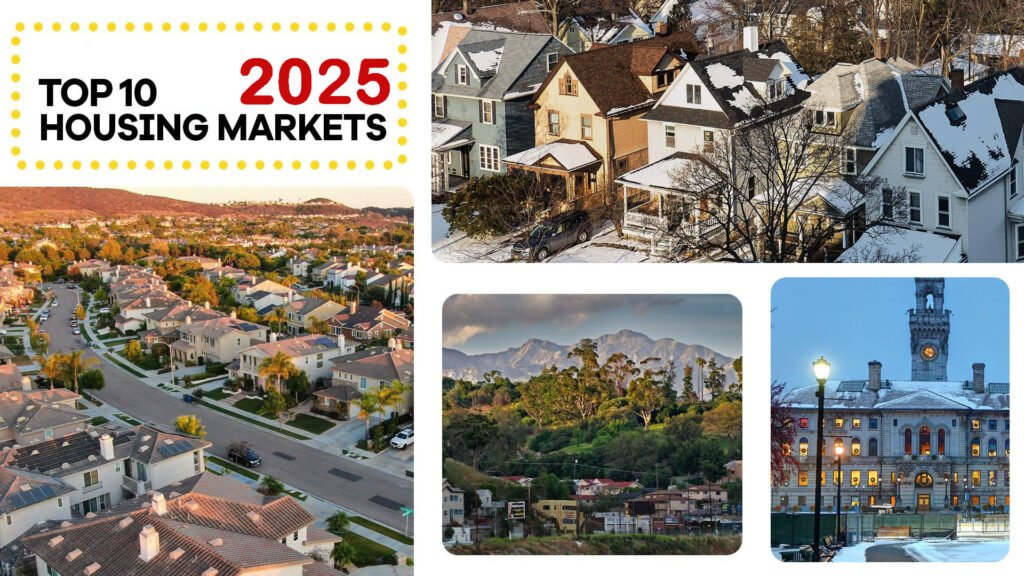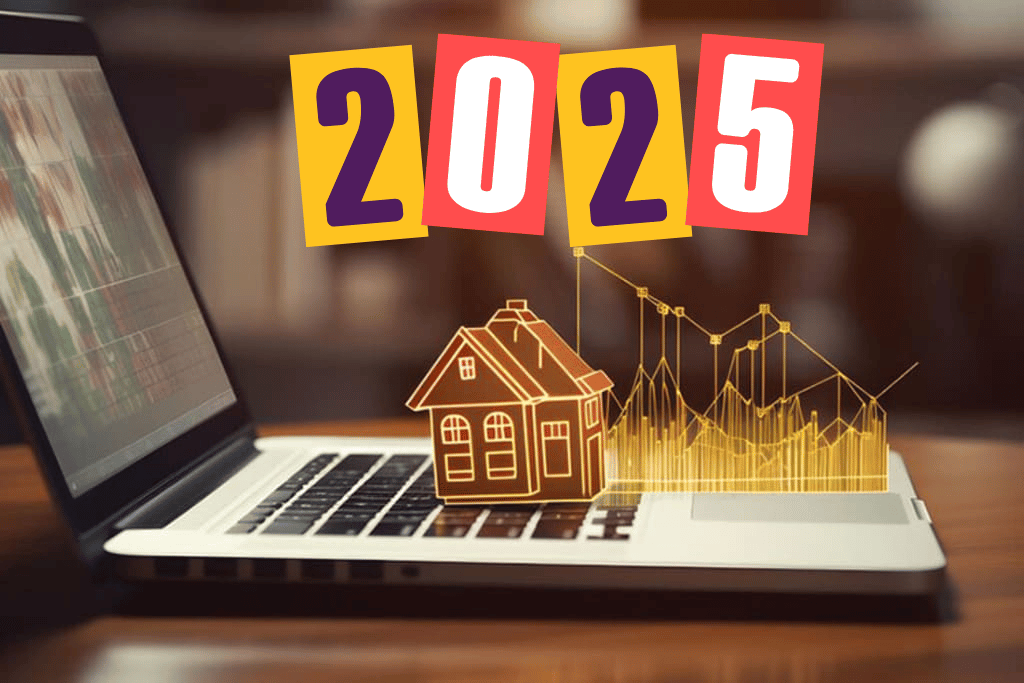
The real estate landscape in the USA has always been a dynamic and evolving sector, reflecting the economic, social, and technological shifts of the times. As we look toward 2025, understanding the top real estate market trends becomes essential for investors, homeowners, and industry professionals alike. From shifting buyer preferences to innovative technologies shaping the way properties are bought, sold, and managed, the industry is poised for transformative changes. These trends are not only reshaping the market but also presenting unprecedented opportunities for those ready to adapt and capitalize on them.
As we delve deeper into these trends, it becomes evident that the future of real estate will be driven by sustainability, smart technologies, and a renewed emphasis on community living. Whether you’re a seasoned investor or a first-time homebuyer, staying informed about these developments can be the key to making sound decisions in a competitive market. This article explores these trends comprehensively, providing insights into what’s driving these changes and how they can benefit stakeholders in the real estate sector.
The stakes have never been higher. With housing demands fluctuating, technological advances disrupting traditional practices, and environmental concerns taking center stage, understanding these trends isn’t just about staying ahead—it’s about thriving in a market that rewards foresight and adaptability. Let’s dive into the key real estate market trends shaping the USA in 2025 and beyond.
1. Surge in Smart Home Integration
Smart home technology is no longer a luxury—it’s an expectation. In 2025, properties equipped with advanced home automation systems are expected to dominate the market. Buyers are seeking homes that offer enhanced security, energy efficiency, and convenience. Features such as voice-activated controls, smart thermostats, and advanced surveillance systems are becoming must-haves.
The integration of smart home technology goes beyond convenience. It is a critical component of energy efficiency, a growing concern for environmentally conscious buyers. For instance, smart thermostats can optimize energy usage, significantly reducing utility bills and environmental impact. This trend benefits not only the environment but also homeowners, who can enjoy cost savings and increased property values.
For real estate agents and developers, marketing properties with smart technology can be a differentiator in a crowded market. By showcasing these features, sellers can attract tech-savvy buyers willing to pay a premium for modern conveniences.
2. Focus on Sustainable Living
Sustainability is reshaping the real estate market. In 2025, eco-friendly homes will be in high demand as environmental awareness continues to grow. Buyers are prioritizing properties with solar panels, efficient insulation, and sustainable building materials. These features align with the broader cultural shift toward reducing carbon footprints and promoting green living.
The benefits of sustainable properties extend beyond ethical considerations. Many states offer tax incentives and rebates for energy-efficient homes, making them financially attractive. Moreover, green homes often have lower maintenance costs, enhancing their long-term appeal.
Real estate developers are responding to this demand by incorporating green practices into their projects. From urban developments with green rooftops to suburban homes with rainwater harvesting systems, the emphasis on sustainability is reshaping architectural designs and construction practices.
3. Growth of the Build-to-Rent Market
The build-to-rent (BTR) market is experiencing unprecedented growth. With rising housing costs and a preference for flexible living arrangements, many Americans are opting to rent rather than buy. BTR developments cater to this demand by offering high-quality rental properties designed for long-term tenants.
BTR communities often include amenities such as gyms, coworking spaces, and communal areas, appealing to younger demographics and professionals. These developments are particularly popular in urban areas where property ownership is cost-prohibitive. For investors, BTR properties offer steady income streams and reduced risks associated with individual property management.
This trend highlights a shift in housing preferences, with many individuals valuing lifestyle and convenience over ownership. As this market segment expands, it presents lucrative opportunities for developers and investors alike.
4. Increased Demand for Mixed-Use Developments
Mixed-use developments are gaining traction as a solution to urban sprawl and long commutes. These developments combine residential, commercial, and recreational spaces, creating self-contained communities that meet a variety of needs.
In 2025, the demand for mixed-use developments is expected to rise, driven by a desire for convenience and sustainability. Residents can work, shop, and relax within walking distance of their homes, reducing reliance on vehicles and fostering a sense of community. This trend aligns with the growing preference for walkable neighborhoods and urban living.
For developers, mixed-use projects offer diversified revenue streams and the potential to attract a broader demographic. By blending residential and commercial spaces, these developments create vibrant communities that appeal to millennials, families, and retirees alike.
5. Remote Work’s Influence on Suburban Markets
Remote work has permanently altered the real estate market. As more companies embrace hybrid and fully remote work models, suburban and rural areas are experiencing a surge in demand. Buyers are seeking homes with dedicated office spaces, larger lots, and access to outdoor amenities.
This trend has also led to increased home prices in traditionally affordable areas, as remote workers flock to regions with a lower cost of living and high quality of life. For sellers, this represents an opportunity to capitalize on the growing demand for suburban properties.
Real estate professionals should focus on highlighting the advantages of suburban living, such as spacious homes and proximity to nature. By catering to the needs of remote workers, they can tap into a market segment that shows no signs of slowing down.
6. Emphasis on Affordable Housing Solutions
The lack of affordable housing remains a pressing issue in the USA. In 2025, addressing this challenge will be a priority for policymakers, developers, and community organizations. Innovative solutions, such as modular construction and public-private partnerships, are emerging as viable strategies.
Affordable housing developments are not only socially responsible but also economically viable. They attract government incentives and can generate long-term revenue streams for investors. Additionally, these projects contribute to community stability and economic growth, benefiting society as a whole.
For developers, engaging in affordable housing projects can enhance their reputation and establish them as leaders in addressing critical societal issues. As demand for affordable housing continues to grow, this sector presents significant opportunities for impact and profit.
7. Technology-Driven Real Estate Transactions
The digital revolution is transforming the way properties are bought and sold. In 2025, real estate transactions are increasingly taking place online, leveraging technologies such as blockchain and virtual reality (VR). These tools enhance transparency, reduce fraud, and streamline the buying process.
Blockchain technology, for example, enables secure and transparent property transactions, eliminating the need for intermediaries and reducing costs. VR allows buyers to tour properties remotely, saving time and expanding the reach of real estate listings.
For real estate professionals, adopting these technologies can improve efficiency and client satisfaction. By staying ahead of technological trends, agents and brokers can differentiate themselves in a competitive market.
8. Senior Housing and Aging in Place
The aging population is driving demand for senior housing and aging-in-place solutions. In 2025, developers are focusing on properties designed to accommodate older adults, offering features such as single-level layouts, wheelchair accessibility, and proximity to healthcare facilities.
This trend reflects a broader societal shift toward empowering seniors to live independently for as long as possible. For families and caregivers, such properties provide peace of mind, knowing that their loved ones are in safe and comfortable environments.
Investors can benefit from the growing senior housing market by exploring opportunities in assisted living communities, age-restricted developments, and home modification services. As the baby boomer generation ages, this sector will continue to expand, creating significant opportunities for growth.
Conclusion
The real estate market in the USA for 2025 is marked by transformative trends that reflect changing lifestyles, technological advancements, and societal priorities. From smart home integration and sustainable living to the rise of build-to-rent communities and mixed-use developments, the industry is evolving to meet the demands of modern buyers and renters.
For investors and professionals, understanding these trends is critical to staying competitive in a rapidly changing landscape. By embracing innovation and addressing the needs of diverse demographics, the real estate sector can unlock new opportunities and drive long-term growth.
As we navigate these shifts, one thing is clear: the future of real estate is bright, dynamic, and filled with potential. Whether you’re looking to invest, sell, or buy, staying informed about these trends can position you for success in a market that rewards adaptability and foresight. By leveraging the insights shared here, you can make informed decisions that align with the evolving demands of the real estate market.






